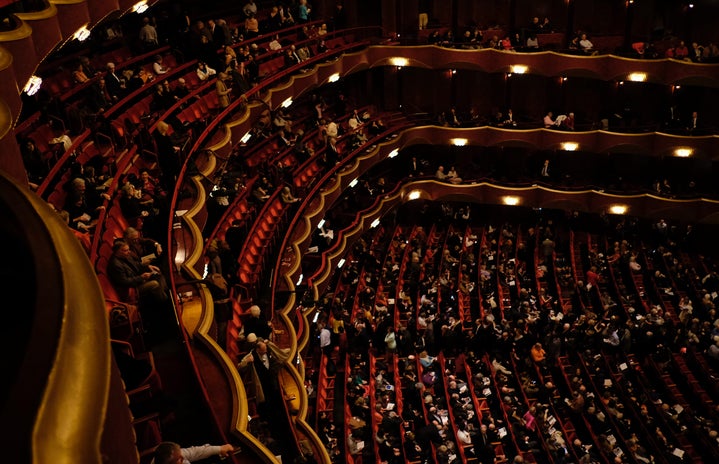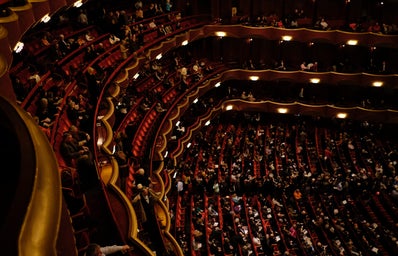As Halloween has garnered a reputation for its fall festivities and spooky aesthetic, many people (including me) love to get into the Halloween spirit by watching scary movies and listening to some spooky tunes. Every October, I’ve listened to my autumn playlist on repeat as the end of the month draws near, but lately, I’ve been taking a step back from my consistent repeat of pop tunes. For those unfamiliar, let me introduce you to the classier side of Halloween, specifically, classical music. Contrary to popular belief, there are numerous classical pieces that don’t fall under the umbrella term of being “relaxing and easy to listen to while you need to concentrate on your homework.” Classical music can, at times, be energetic and bold, and certain pieces can even give off spooky vibes. Here, I’ve compiled a list of seven classical music pieces that remind me of Halloween and provided links to each of my favorite performances!
la danse macabre
Suppose you wanted to listen to a piece that embodied the aesthetic of Halloween as a whole. In that case, the first piece that comes to mind is La Danse Macabre, op. 40. In 1875, Camille Saint-Saëns reworked this symphonic poem for the orchestra from Henry Cazalis’ art song, who based his composition off of an ancient superstition from the Middle Ages. As the name of this piece is synonymous with the phrase “Dance of the Death,” it is a superstition that every midnight on Halloween, Death calls forth the dead from their graves so that they can dance for him whilst he plays his fiddle. They dance until the brink of dawn, and afterward, they slumber back into their graves until the following year.
Along with Saint-Saëns’ symphonic poem, the legend of “Danse Macabre” also inspired many other works, such as Walt Disney’s short animation: The Skeleton Dance. This animation provides direct imagery of multiple skeletons dancing on Halloween night, making it much easier to imagine what Camille Saint-Saëns envisioned as he composed his orchestral piece.
Erlkönig
At only 18 years old, Franz Schubert composed the infamous ballad known as “Erlkönig” for two performers: a vocalist and a pianist. Directly setting Johann Wolfgang von Goethe’s poem written in 1782, the story depicts a young boy and his father riding on horseback. Whilst the boy is being courted by a supernatural entity known as the “Erl-king,” the father cannot see or hear this creature and believes it is all in the boy’s imagination. At the end of the poem, the Erl-king captures the boy, and as his father realizes this, he returns home to find his son dead in his arms.
Franz Schubert’s ballad inspired many other famous composers to write transcriptions of the piece for different instruments, and one of my favorites is Heinrich Wilhelm Ernst’s transcription of Erlkönig for a solo violinist. This caprice is one of the most challenging violin pieces of all time, and making it sound effortless is extremely impressive. This piece is so demanding that performing it feels like playing a piece written for multiple violinists all by yourself. Not only that but there are numerous complex chords coupled with awkward string crossings that can sound crunchy if you don’t take your time practicing every note to the extreme detail. Among the few who can perform this piece seamlessly, my favorite performance of Erlkönig is by Hilary Hahn. If you haven’t listened to her interpretation, I highly recommend you do so because she makes this transcription sound absolutely beautiful!
suggestion diabolique
Contrasting with the romantic era of the early 20th century, Sergei Prokofiev composed his heavily criticized piano masterpiece, “Suggestion Diabolique, Op. 4, No. 4”, which was well known for its dissonant chords and eerie melody. “Suggestion Diabolique” translates to “Diabolical Suggestion” in English, and at the young age of 16 years old, Prokofiev composed this character piece in a little under two months. What inspired him to write it was both a frigid winter storm in his conservatory’s town and an act of rebellion against the adamant teachings of his piano professor. Although the piece’s overtones, which invoke pure terror upon listening to it, were controversial during his time, that is what makes this composition so memorable today. I think this piece is likely meant to imitate the sound of the devil laughing, but what you hear from it is entirely up to interpretation. That’s the beauty of classical music; everyone hears a different story being told through the music, no matter what the composer had in mind while writing it.
shostakovich string quartet no. 8
In 1960, Dmitri Shostakovich composed his eighth and most influential string quartet, and later on, dedicated this piece of music to victims of both fascism and war. Written in only three days, Shostakovich’s String Quartet in C minor consists of five movements: I. Largo, II. Allegro molto, III. Allegretto, IV. Largo, and V. Largo. As the first movement starts very slow and riveting, it quickly changes pace with its gut-wrenching second movement, the most well-known section of the whole piece. In my opinion, the second movement is also the most reminiscent of Halloween, with its bold and sinister tone, as well as its intense dynamics played throughout. These characteristics make the piece’s second movement so popular that even those who don’t normally listen to classical music can enjoy it just as much as anyone who is more familiar with the genre. However, if you have roughly 23-24 minutes to spare, listening to this entire piece is a huge staple for anyone looking for a piece of music that perfectly encapsulates the frightening aspect of Halloween!
Ysaÿe sonata in d minor, ‘ballade’
Among the six violin sonatas written by Eugene Ysaÿe during his lifetime, the most popular of those works is his third sonata, composed in 1923. He dedicated each of his six sonatas to different violinists, and ‘Ballade’ was written for the Romanian violinist and composer George Enescu. Ysaÿe’s Sonata in D Minor contains two sections: a slower and more emotional beginning, leading to the powerful and haunting section later on. In my opinion, the strongest emotions that this piece invokes are terror and anxiety, and Ysaÿe captures those feelings extremely powerfully. I’ve listened to many performances of this sonata throughout my life, but I believe that the most legendary performance is by Maxim Vengerov from when he performed it as an encore. Not only did he perform ‘Ballade’ with such fierce emotions, but he managed to do that right after performing the Sibelius Violin Concerto. To put it into perspective for non-violinists, imagine running an Olympic marathon and winning first place, and immediately afterward, running a 100-meter dash and placing first again. That’s how insane Vengerov’s performance is!
‘Little red riding hood’
It is unclear why Sergei Rachmaninoff’s sixth piano etude from op. 39 was nicknamed by performers after the classic fairytale, “Little Red Riding Hood,” but many believe it is because as he was composing it, he took inspiration from the actual story, but with a dark twist. In the original fairytale, a young girl in a red hood journeys through the woods to deliver food for her grandmother, and as she’s walking, she is being hunted by a hungry wolf. The wolf asks the girl where she’s going, and once she tells him, he devises a plan to eat both her and her grandmother. Once the girl arrives at her grandmother’s house, her grandma has already been eaten by the wolf, and the wolf substitutes the grandma by wearing her clothing. There are many different versions of the ending; in one, she is rescued by a local woodsman, and in another, she is clever enough to escape on her own. However, the ending of Rachmaninoff’s etude is just as dark and sinister as the beginning, so the dark twist in this piece is that Little Red Riding Hood ended up suffering a grim fate at the hands of the wolf. As the piece sounds reminiscent of a wolf stalking its prey in the middle of the night, listening to it almost feels like standing in Little Red Riding Hood’s shoes, being chased by a rabid wolf.
dance of the goblins
Unlike the other pieces listed previously, which embody Halloween’s haunting and eerie nature, Antonio Bazzini’s violin solo titled “Dance of the Goblins” displays the whimsical and festive side of the spooky season. As the title is roughly translated into English from Italian, the original name of this piece is “La Ronde des Lutins.” A lutin is a type of hobgoblin that can shapeshift into different animals, and most notably, they entangle human and horse hair into elf-locks. As you listen to Bazzini’s composition, it becomes straightforward to envision these mythological lutins, or goblins, as they dance around and play pranks on humans and other beings.
Although not as technically challenging as Ernst’s Erlkönig, Bazzini’s Dance of the Goblins is still regarded as extremely difficult amongst standard violin repertoire. This is due to the artificial harmonics in double stops sprinkled throughout the piece, along with the rapid left-hand pizzicato and other such techniques. Once again, my favorite performance of Dance of the Goblins is by Maxim Vengerov, and if you haven’t listened to it yet, I highly recommend you do so!
From frightening and sinister tunes to more lighthearted and whimsical pieces, there are many works of classical music to pick and choose from, no matter what mood you’re in, especially if you’re looking to get into the spooky season. As someone who is rediscovering her love for listening to classical music, I’ve found myself consistently listening to these pieces, especially as October 31st is drawing near. Classical music is definitely not as popularized in the media compared to other genres of music, but I believe it deserves much more recognition due to its impact and standing legacy. After all, what would music even be today if it weren’t for the works of these fantastic composers? Anyway, I hope that you can give these beautiful pieces of music a listen, as well as classical music as a whole!



